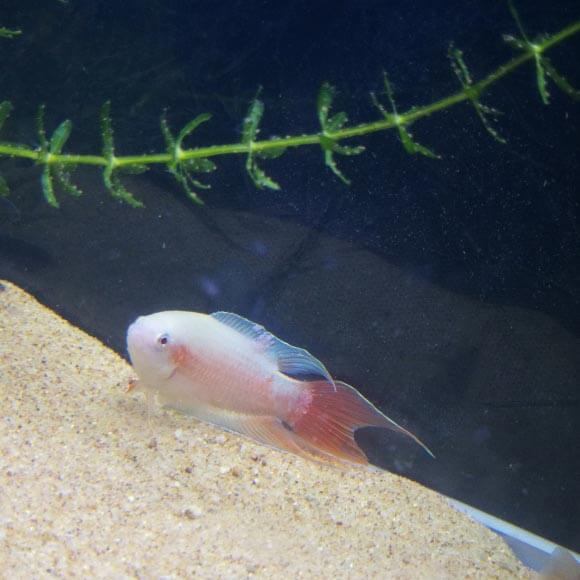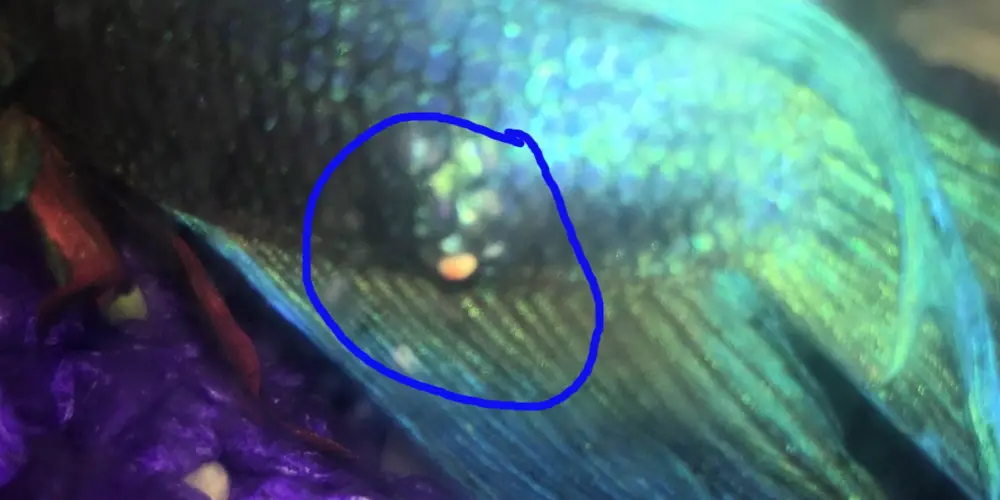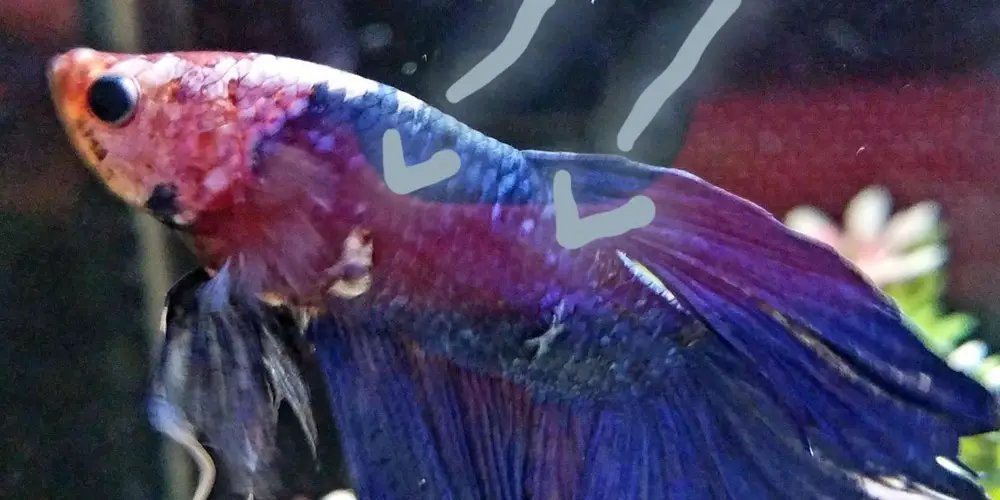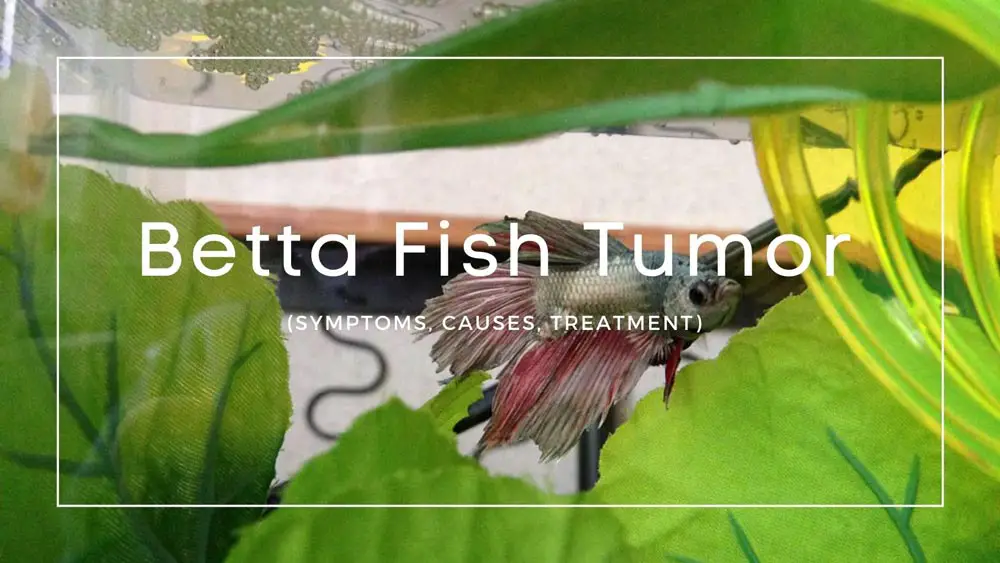Like most pet owners, fish enthusiasts have to deal with sick fish occasionally. Though this is not pleasant, most fish diseases can be cured with a little attention and effort, even betta fish tumor.
Below, we will discuss identifying a tumor on your betta fish, the treatments available to heal your fish, and how to prevent future tumors.
Can Betta Fish Get Tumors and Cancer?
Yes, betta fish can develop tumors and cancers in much the same way as humans and other animals.
How Likely Is It Your Betta Will Get A Tumor?
Although tumors are somewhat rare in bettas, they are one of the least threatening illnesses your betta can catch. Before panicking, do some investigation to rule out ulcers and abscesses, which sometimes look similar to tumors. Fluid retention, constipation, and swim bladder disease can also cause tumor-like spots to appear on your betta’s body.
What Are Betta Fish Tumor Symptoms?
If you spot any bumps under or on your betta’s skin, it might be tumors. Tumors come in different sizes, from tiny to huge. Large tumors can affect your betta’s buoyancy and make swimming more difficult.
On the other hand, if the tumor is internal, you will probably not see it. If your fish has difficulty eating and swimming, it may have an internal tumor. If so, your betta will quickly become unhealthy. Unfortunately, internal tumors can’t be healed, and your betta will die. For these situations, the only humane thing to do is to euthanize your fish, so they don’t suffer.

Your Betta Fish Has A White Tumor?
Typically, the bump you have spotted is most likely not a tumor. It’s very rare for a Betta fish to develop a cancerous tumor. Instead, the bump your fish has developed is usually an abscess or an ulcer. Both of these types of bumps resemble tumors. Fluid retention, constipation, and swim bladder disease can also resemble a tumor.
Abscesses
If you spot a white bump on your Betta’s body, it’s probably an abscess rather than a cancerous tumor. Bacterial infections are the main cause of Abscesses. There are various ways your Betta can develop a bacterial infection, such as injuring itself on something sharp within your fish tank. Or, the damage could be caused by another fish nipping at your Betta. You could accidentally cause an abrasion when changing the water or when handling your Betta.
Abscesses will usually heal themselves. However, if the water in the tank is not changed out frequently and kept healthy, bacteria will infect the site of the wound and infection will begin.
If an abscess is not treated properly, it will grow until it’s too large for the fish’s skin to contain it, and then it will burst, leaving a large, open area on its body that will become infected, and the entire cycle will begin again.
Treating A Betta Fish Abscess
If you notice a bump on your fish’s skin, you need to remove it from its main tank and put it in a quarantine tank alone. To set up the quarantine tank, you will need to make sure that the water is set to the same conditions as the main tank. Your quarantine tank will need lighting, heating, an adequate filtration system, as well as a hiding place.
Your quarantine tank needs to be maintained regularly to ensure the tank remains clean, especially after the abscess bursts. Frequent water changes is a must.
When your Betta is sick, it will feel vulnerable. Providing a place for your Betta to hide in the quarantine tank will keep your fish from becoming stressed out. In a pinch, a plastic plant pot with smooth sides will work. Just set it on its side in the tank and partially bury it in the substrate and you will have created an affordable and safe hideout for your fish.
You could also add plants to the quarantine tank instead of a cave of some sort. Plants are a great hiding spot for your Betta to recuperate in. However, avoid fresh plants as they can sometimes carry unwanted bacteria and parasites that could further harm your Betta.
If the abscess is not too large, your fish will have a better chance to survive it. You will want to treat the tank’s water with the appropriate antibacterial aquarium product. You can find them online or in your local fish store. Follow the directions, using the recommended dosage.
It Might Be An Ulcer
Ulcers are common for Betta fish. They look like sores with a red area around the lump on the fish’s skin. Ulcers can make your fish lethargic and cause them to lose their appetite, which eventually will make them look emaciated.
Bacterial infections are the main cause for ulcers in Bettas. Even when you have cleaned and maintained the tank regularly, there are still bacteria that will remain in the water. Under normal circumstances, this bacteria will not harm your fish. However, if your Betta becomes stressed due to unfavorable conditions in their environment, such as poor water quality, they will become vulnerable to infection from these bacteria.
Treating A Betta Fish Ulcer
As we mentioned previously, it’s important for you to remove your Betta from its main tank and transfer it to a quarantine tank if you see any signs of an ulcer.
Once the ulcer heals, fungal infections are frequently a possibility. It’s crucial to continue with frequent water changes for at least three weeks after the ulcers have been treated successfully.
Adding salt to the tank’s water after the first water change will help to encourage the healing of the wound. You only want to add one-fourth of an ounce per gallon of water to reduce the osmotic effect that water has upon entering the ulcer, as well as disinfecting the wound.
After each water change, you should add about 30% of the salt you originally added to maintain the water’s salt content. Monitoring the water’s salt level is easy with the use of a hydrometer. Also, you will want to add an antibacterial aquarium product into the water. Once the ulcer is completely healed, you can return your Betta to its main tank again.
Where Can Tumors Be Located?
The tumors can appear anywhere on the fish’s body. However, as we mentioned previously, not all lumps are tumors. In fact, there are places on your fish’s body that will develop lumps that are not tumors after all.
Here is a brief guide meant to help you determine the cause of any lumps tht appear on certain areas of a Betta’s body.
Tumor On Your Betta Fish’ Head
Lumps that form on a fish’s head are quite common. Although Bettas can develop tumors on their head, bacterial infections can also cause lumps to develop on their heads. One of the most common bacterial infections is columnaris. This infection will cause tumor-like lesions to develop around the Betta’s mouth and gills.

Tumor On Your Betta Fish’s Side
If you spot lumps on your Betta’s side, it could be a variety of possibilities, usually easily treatable. Although the lump might be a cancerous tumor, it is more likely to be swim bladder disease or a bacterial infection.
It Might Be Betta Fish Swim Bladder Disease
If your Betta’s side looks swollen and lumpy, it could be swim bladder disease. The swim bladder is an organ filled with gas that allows the fish to navigate up and down in the tank’s water. This works the same way as a buoyancy aid for a diver.
One of the tell-tale signs of a fish with swim bladder disease is that their abdomens will appear swollen and become lethargic. They will sink to the tank’s bottom or involuntarily float on the surface of the water. Your Betta can also develop an unbalanced or lopsided position while it’s swimming because it won’t be able to stabilize itself.
Swim bladder disease is usually caused by overfeeding and constipation. The easiest way to treat swim bladder disease is to abstain from feeding your Betta for a couple of days to all the digestive system to digest whatever food remains in its stomach. Luckily, swim bladder disease isn’t contagious, so you will not need to transfer your Betta to a quarantine tank. You can also talk to your local pet store for other possible treatments.
Bacterial infections
Bacterial infections can develop when your fish has been injured or another fish has nipped it. These infections will often look like lumps on the sides of your Betta. These lumps can become infected and turn into abscesses, as mentioned previously.
Over-the-counter antibacterial products can be used to treat the water if you have any concerns that your tank has been infected. The OTC antibacterial products will clear up any infections relatively quickly. Be sure to quarantine your infected fish in a separate tank as soon as possible while treating the main tank.
Tumor On Betta Fish’s Stomach
Lumps that develop on your Betta’s stomach are the most common. Although these lumps can actually be tumors, there are a variety of other culprits as well. A bacterial infection, constipation, swim bladder disease, and dropsy can all cause lumps on your fish’s sides and stomach.
Constipation
Constipation is a common cause for lumps to develop on your Betta’s stomach, and fortunately can be treated easily. If your fish becomes lethargic, stops eating, and hasn’t passed any feces lately, it’s probably constipated.
Constipation can even cause swim bladder disease. It can also be treated the same way you treat swim bladder disease, by withholding food for a few days. Once you are ready to feed your Betta again, offering it live and frozen food, such as mosquito larvae or bloodworms, is better than feeding it flakes or dry pellets.
Some of the more experienced fish enthusiasts will add a day of fasting each week to their Betta’s feeding schedule. This will also help prevent constipation in your Betta.

Tumors in Betta fish’s Gills
Gill hyperplasia is another condition that is known to cause lumps and tumors of the gills. However, this usually only occurs when the gills have been damaged by a physical injury, or bacterial or parasitical infection, or toxins such as nitrites, nitrates, and amonia.
Rather than properly healing, the newly developed gill tissue will grow, covering the damaged area and form a lump that looks like a tumor. The lump will grow larger over time, as new skin forms. Only in some severe instances of hyperplasia can the lumps become permanent. With most minor cases you will see that after the lumps disappear, the gills will become normal again.
How Do You Treat Tumors in Betta Fish?
Unfortunately, there is no effective treatments or cures for most tumors and cancers. If the tumors or cancer is internal, they are usually not diagnosed until the diseasae is in the advanced stages. If you are able to diagnose the cancer early, it is usually inoperable due to the tumor’s position and location. Most fish with cancer or tumors are humanely euthanized for this reason.
However, some tumors are treatable, such as gill tumors, caused by a thyroid issue, and treated by medicating the water in a quarantine tank with iodine.
How to Prevent Tumors in Betta Fish?
As long as you are proactive in choosing and taking care of your Bettas, you can greatly diminish the possibility of them developing any kind of tumors or cancer.
- You always want to buy from a reputable breeder. Avoid inbred fish. They are more likely to have problems, including developing cancerous tumors.
- Use and maintain an efficient filtration system will help keep the tank water clean and healthy. Also, changing 25% of the tank water each week will help prevent any bacteria buildup.
- Feeding your Betta a diet rich in quality foods will give them the proper levels of nutrients and protein they need to stay healthy.
- Immediately quarantine any fish that you suspect might be ill in any way before they are able to infect the healthy fish in your tank. This will stop the contagion from spreading.
Summary
Although there are several different causes for lumps on your Betta’s body, most can be treated if caught early enough. Cancer, unfortunately, is not one of those. If you have ruled out all other possibilites for illness in your Bettas and you suspect the lumps to be cancerous, you will need to consider euthanizing your fish. It’s the humane thing to do.
